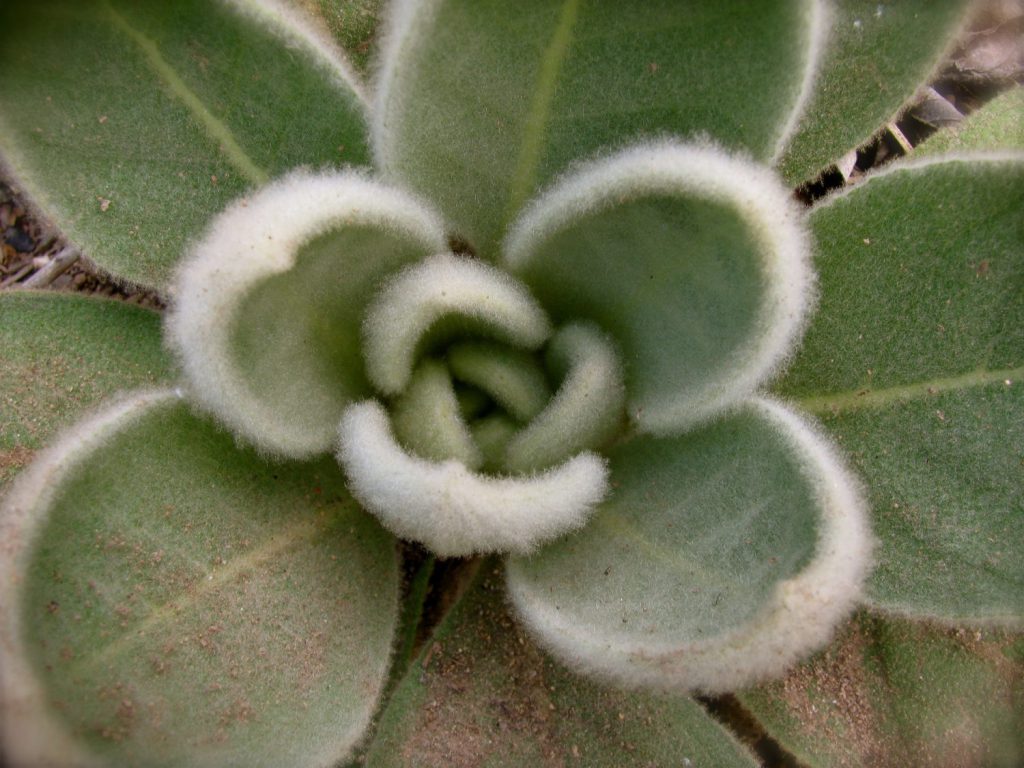I love watching my garden wake up in the early morning hours of the summer. As the sun readies itself to crest the eastern ridge, birds and bees and small mammals are beginning to stir. Like many mornings, I am captivated this morning by the mullein plants. In this late summer moment, their stalks of creamy yellow blossoms reach into the air, stretching up taller than I am.
Mullein is full of life. A hummingbird is visiting nearby honeysuckle and its path crisscrosses those tall stalks. A woodpecker, intent on its foraging, doesn’t seem to notice. It goes up and down the stalk, perhaps eating the ants and other bugs as well as eating some of the millions of seeds that are forming. One morning while I was harvesting strawberries, I found a whole family of voles underneath the thick mullein leaves. The babies were small and hairless, probably only a few days old. The large leaves perfectly curled over their nook, offering a beautiful refuge from the world.
Mullein Uses & Plant Profile Summary:

- Botanical Name: Verbascum thapsus, V. olympicum, V. densiflorum, V. virgatum, V. blattaria, V. spp.
- Other Common Names: Western Wormwood, Western Mugwort, St. John’s Plant
- Family: Scrophulariaceae
- Parts Used: roots, leaves, flowers
- Energetics: roots: warm, dry; leaves: cool, moist; flowers: cool, moist
- Taste: sweet, salty
- Plant Properties:pectoral, demulcent, relaxant, lymphatic, modulates inflammation, possibly antiviral
- Plant Uses: relaxes lungs, soothes sore lungs, calms asthma, alleviates dry coughs, strengthens bladder muscles, addresses back pain, relieves earaches, tightens tissues of hemorrhoids
- Plant Preparations: tea (flowers), nourishing herbal infusion (leaves), decoction (roots), tincture (all parts), fomentation (leaves), infused oil (flowers), smoke (leaves)





